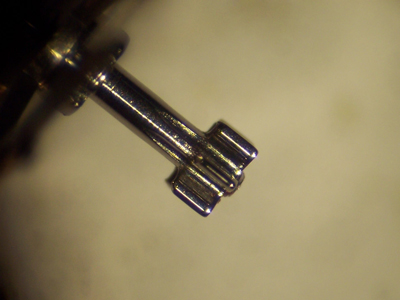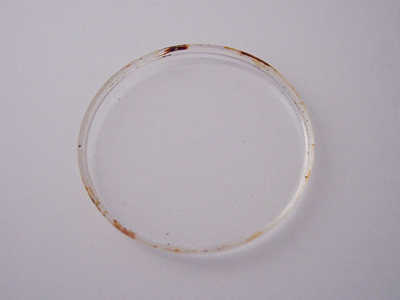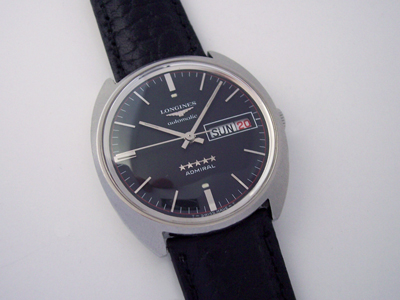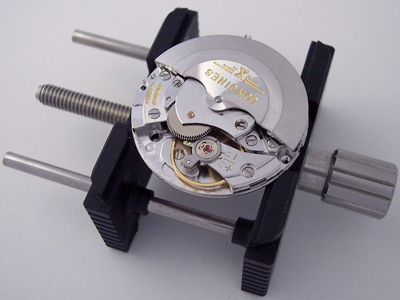It’s been a while since we’ve had a Longines on the blog, so let’s have a look at this Admiral which had certainly seen better days.
(Click pictures to enlarge)
A stalwart of the Longines lineup, the first Admiral model was produced in the late 1950’s, a period which also saw the introduction of two more of Longines’ best known models, the ‘Flagship’ and ‘Conquest’ lines which can still be found in their range today. The watch in this post dates to the late 1960’s or early 1970’s and is typical of Longines’ understated style.
Turning the watch over, the caseback is smooth, again typical of Admiral models from this period, the majority of which were housed in one-piece cases.
I’ve written about another Admiral model in the past where I described their case construction and how to open them, so rather than repeat myself, I’ll direct any interested readers to that post here.
Once inside, the true condition of the dial and hands could be assessed and on the whole, things were looking pretty good. Though the lume was in poor condition throughout, the dial and hands were still in good condition with all the dial print still intact.
The movement inside is a Longines cal. 503, an automatic calibre with a beat rate of 19,800 bph and a limited quickset for the date. Although it bears all the hallmarks of an in-house Longines calibre, it is actually a calibre designed by Record, the cal. 1958. Longines used the Record 1955 and 1958 calibre designs for their entire cal. 50x range after acquiring the company in 1961.
Although relatively clean, there was no sign of life at all from the movement and the oils had congealed throughout, a sure sign that the watch hadn’t been serviced for many years.
On disassembling the watch for cleaning, I found that the escape wheel was missing a pivot which is probably why it was retired to a drawer all those years ago. Thankfully that was the only hidden surprise this time and a new escape wheel proved quite easy to source.
With the movement back up and running, I could move on to the cosmetic issues. The hands and dial were relumed in a vintage cream colour to reflect the age of the watch and the case was cleaned ready for rebuilding.
The crystal however was in pretty poor shape. Although not cracked, it did have patches of discolouration around the base.
After several decades the acrylic becomes brittle and small cracks form in the lower edge of the crystal allowing dirt and rusty water to seep into the body of the crystal over time. Once this happens the only option to fit a new one.
Unsurprisingly new crystals for this model are long discontinued, so in order to re-use the original tension ring and ensure a secure fit for the one piece case, I had to modify an aftermarket crystal to fit.
With both the mechanical and cosmetic issues dealt with, the watch could finally be rebuilt and put back into service.
Rich.
** Many thanks to Norman Eldon for letting me feature his watch on the blog. **










